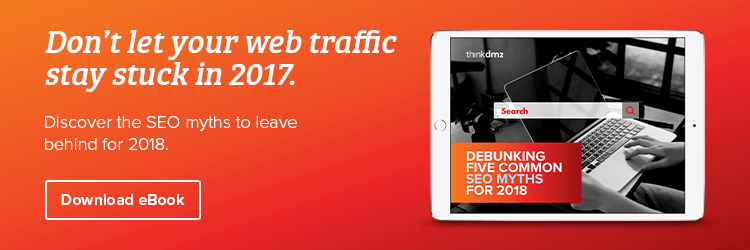
image credit: Ahmetov Renat/shutterstock.com
The amount of analytics information the average b2b business must keep track of is no doubt overwhelming. Whether it’s organic and direct traffic, session durations, or entrances and exits, there is a vast array of data to measure. In some cases, your website may even experience a spike in bounce rate for seemingly no reason.
The truth is, there is an underlying pattern behind the rise and fall of your bounce rate. Here’s what you need to know to understand and improve your b2b website’s bounce rate through Google analytics.
What causes a high bounce rate?
A bounce rate is a page visit to your website that doesn’t trigger more than one request from the page’s server. In other words, a visitor reaches your website but doesn’t take any significant actions. A high bounce rate isn’t always concerning depending on the context; but it’s always worth further investigating.
Most visitors will find themselves backing out of your site quickly for the following reasons, among others:
- The page loads too slowly, or not at all
- The page has an instant pop-up before any action occurs
- The content doesn’t match the visitor’s expectations
What is an ideal bounce rate?
It’s best to have a bounce rate of about 50%, which is considered average. However, blogs typically have a higher bounce rate, since there isn’t much visitor interaction.
If your bounce rate is between 80-100%, there is almost no interaction taking place on the webpage. A high bounce rate is especially concerning for landing pages after a CTA or form. When a landing page bounce rate is noticeably higher, it means you may not be offering enough value from your CTA, or your forms are too overwhelming.
What can you do to lower your bounce rate?
Check to make sure your pages have clear consistency between the visitor’s search and the page they are reaching. Is the content reflective of the link? Visitors will know right away if your content is worthing reading, if it makes proper use of whitespace. You’d be surprised how many visitors hightail it out of your website as soon as they see a huge block of text!
While it’s helpful to include external links to improve your site’s SEO, you shouldn’t be directing your visitors away from the content they’re reading. Set your links to open in a new tab instead of replacing the visitor’s current page.
Your blog content needs a CTA that entices the visitor to click with an engaging offer. The same applies to how you handle pop-up ads on your website. Use ads wisely to provide value and prevent a high bounce rate. It doesn’t make sense to display an ad as soon as a visitor reaches your site; instead, use pop-up ads as the visitor progresses further down the webpage.
Thinkdm2 understands the amount of effort and patience that can go into measuring b2b website analytics. If you want to keep your website optimized and free of an excessive bounce rate, you can download your free ebook to learn about SEO myths.



